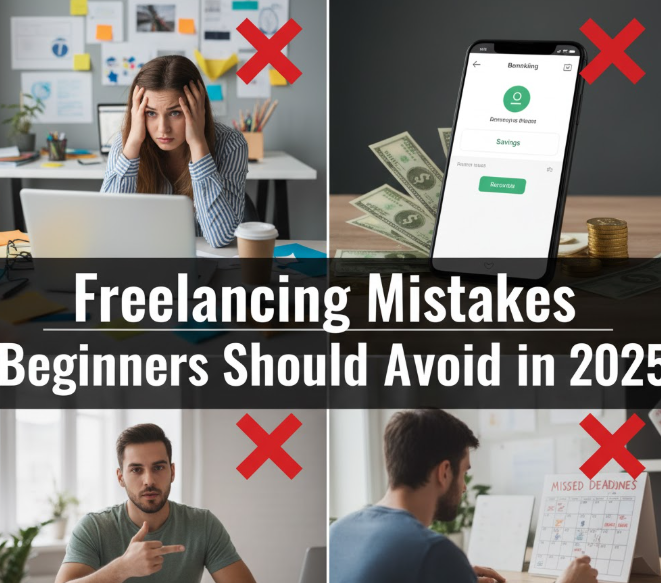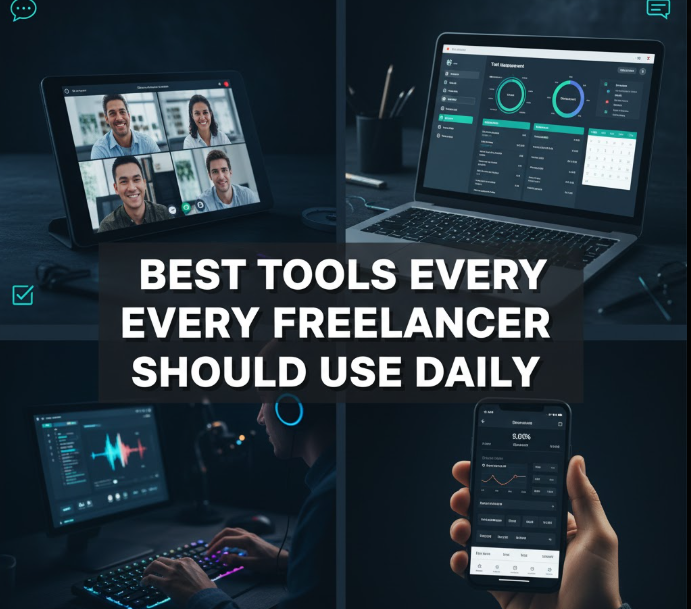Winning Proposals on MicroJobs And Where to Find Them
It’s a murky and fickle process Internet users who pursue the microwork can feel like they’re throwing darts in the dark. You send pitch after pitch, but clients keep choosing other freelancers. What’s the secret? In fact, 99% of folks make the SAME damn mistakes when it comes to writing proposals. They copy-paste generic messages or write furthermore that no one here has the time to read.
This book will teach you exactly what to write, so that you can start winning microjobs right away. It doesn’t matter if you’re over at Fiverr, Upwork or any other platforms because these methods will help you separate yourself from the hundreds of folks challenging for the same job.
What Makes Microjob Proposals Different
Microjobs are short, small tasks that typically pay between $5 and $100. Think graphic design, data entry work, writing articles, social media content. Clients make quick decisions because these jobs are fast and cheap. They are not spending the hours it takes to read through long proposals.
Your pitch has to steal the show in seconds. It must answer the client’s main question straight off: “Can this person fix my problem right now?” Everything else is just noise.
The main difference between normal freelance proposals and microjob proposals is speed. Clients want the person today, not next week. Your proposition needs to convey that you understand their needs and can execute the solution quickly.
The 3-Second Rule: Grab the Viewer’s Attention Instantly
When a client posts a microjob, they could receive 20, 50 or 100 proposals within hours. They’re not reading every word. They’re scanning.
Your opening sentence will be the test: Whether they keep reading or push on to the next proposal. Begin with something that already speaks directly to their project. Never open with “Hello, I hope you’re well” or “I read your job posting and am interested.”
Here’s what works better:
Bad opening: “Hello, I am a graphic designer with 5 years of experience and want to work for your project.”
Good opening: “I can redesign your restaurant menu in 3 different layouts by tomorrow evening.”
See the difference? The second headline is specific about what they will get and when. It lets them know you read their posting and get what they’re looking for.
The Winning Equation: 4 Components Every Proposal Must Have
Each winning microjob offer has a simple format. Think of it like a recipe. Miss one ingredient and the whole thing slumps.
Part 1: Direct Solution Statement
Begin by pinning down precisely what you’re going to do for them. Be specific. Use numbers when possible.
Example of what not to write: “I can help with your social media”
Example of what you could write: “10 Instagram posts + captions for your fitness brand.”
Part 2: Short Proof You can Offer
Don’t catalog all your jobs. Choose one example that shows you already have and show it to them.
“I wrote 15 product descriptions for an electronics shop last month, and their click through rate went up by 23%.”
This is a two-sentence one, but it makes the client feel like you know what you’re doing.
Part 3: Demonstrate You Read Their Needs and Wants
Cite something specific in their job posting. This shows that you’re not sending copy-paste proposals to all.
“I saw you posted that you wanted a friendly, conversational feel for your blog posts. That’s exactly my writing style.”
Part 4: Clear Next Step
Conclude with a modest call to action. Make it easy for the client to go, “Yes.”
“Let me know if you’re interested and maybe we can work together. Also, I write in the same niche as yours. I can start this week.”
Mistakes That Blow It For You
Let’s start by discussing what NOT to do. This error is present in perhaps 80% of proposals. There’s one more threat, but steer clear of any of these and you’re ahead of much of the competition.
Mistake 1: The My Life Story Bio Error
Who cares that you graduated from X university or that you love your cat? Let it be about what the client wants, not your autobiography.
Mistake 2: Generic Copy-Paste Messages
Clients can spot these instantly. “I’m excited about your project and I have all the skills you’re looking for.” This says nothing, and shows you didn’t read their posting.
Mistake 3: Centering Only on the Want
“I really need this job” or “This would look great in my portfolio” are essentially begging clients to give you work. Flip it around. Show what’s in it for them.
Mistake 4: Overdoing the Humble or Arrogant Act
There’s a balance. Not “I could probably be helpful here” (tentative) or “I am the very best at this!” (false). Instead be confident and also specific: “I have completed 47 similar projects with amazing 5-star reviews.”
Mistake 5: No Personality
Clients on microjob sites tend to favor freelancers that they trust and can communicate with. Let loose a tiny bit of your personality. Be professional but human.

Pricing Tactics: Quoting For A Job Without Losing It
Pricing microjobs is tricky. Quote too steep and clients ignore your proposal. You quote too low and they wonder about your quality.
Here’s a smart approach:
| Strategy | When to use it | Example |
|---|---|---|
| Match their budget | They listed the specific budget | “I can get this done for you within your $50 budget” |
| Offer package options | The scope isn’t crystal clear | “Basic: $30, Standard: $50, Premium: $75” |
| Break down costs | Complex microjob with a few different parts | “Writing: $40, Editing: $10, Formatting: $10” |
| Suggest better | Do a better job, it can push back against their budget or a way to increase value of your offer | “For best results I’d suggest $75 instead of $50…” |
Never apologize for your rates. In other words, don’t cite a price (“$40 for this project”) then tack on extra language such as “if that works for you” or “let me know if that’s too much.” State your price confidently.
Customization Hacks That Save Time
You’re likely thinking: “This is great, but I don’t have time to write a custom proposal for each and every job.” Fair point. Here’s how to customize quickly.
Build up a library of templates as building blocks. Store these in a document:
Opening Lines (select one according to what project is this for):
- Design projects: “I will design [specific deliverable] and include [number] of rounds of revisions.”
- Writing projects: “I will write [number of words] on [subject matter] in a [cool/sarcastic/professional tone/style]”
- Tech projects: “I’ll [specific action] using [tools/methods] by [deadline]”
Proof Statements (rotate these):
- Recent success story with numbers
- Projects in this category done by our developers
- Specific skill or tool expertise
Closing Lines (alternate these):
- “Ready to start today. Shall we discuss the details?”
- “I’ve included examples of related work. Let me know your timeline.”
- “Can be reached by phone if you have any questions. Otherwise, I can begin immediately.”
Have a few of these blocks, mix them up, and then customize 2–3 sentences to include the key details from the job posting below. This process all takes 3–5 minutes in place of the standard 20.
The Psychology of Client Decision-Making
Wanna know the secret of what actually makes clients ‘click’ hire on your proposal? It’s not necessarily the most experienced who will win. Knowing how clients think is a huge leg up.
Those who hire for microjobs are usually divided into two categories of clients:
The Urgent Client needs it now. They’re more about speed and dependability than perfection. To these clients, you probably want to highlight your fast response time and availability. “I can do this by EOD tomorrow!” gets the job.
The Perfectionist Client This client needs exactly what they were thinking. They’ll pay a little extra for someone who “gets it.” Give clients like this a demonstration that you understand the subtleties. Pose clarifying questions in your proposal. “Double check if I understand, you need the logo in a modern and vintage style?”
There are three anxieties most clients share as well:
- Is this person really going to come through for me?
- Will it be easy and smooth to communicate?
- Will I have to do tons of revision?
Speak to those fears in your proposal. “I’ll get you a draft to approve before the final delivery” deals with fear #3. “I’m getting back to you within 2 hours on business days” overcomes fear #2.
Power Words That Boost Response Rates
Words that invoke a positive reaction with customers. These aren’t manipulation tactics. They’re plain, confident language that helps to allay confusion.
Words to include:
- Specific numbers (3 revisions, 48 hours delivery, 95% satisfaction rate)
- Action Words Related To Design, Content And Development (Create, Write, Design, Optimize, Make, Improve)
- Expression Certain Things (I will, I can, you’ll get)
- Timelines (this week, by Friday, within 24 hours, this week)
Words to avoid:
- Maybe, possibly, hopefully, I think
- Try, attempt, work on
- “Dear Sir or Madam” (grimly old-fashioned)
- Complex terminology that the client may not recognize
Compare these two sentences:
Version A: “If you’d like, I can help you with your website.”
Version B: “I’ll redesign your homepage to be mobile optimized by Thursday.”
Version B uses power words (will, redesign, optimization, Thursday) which imply confidence and clarity.
How to Stand Out in a Crowded Field of Job Applicants
Some microjobs attract 50+ proposals. How does one stand out in such a crowded field?
Tactic 1: Reply in Less Than an Hour
The bird really does get the worm. The proposals are frequently reviewed by clients upon arrival. They’re among the first batch, so they’ll see yours when they’re still actively swiping—not exhausted from having read 40 others by then.
Tactic 2: Get Personal
Scoop something out of the client’s profile or their posting. “I saw your company is located in Austin. I previously worked at another Austin tech startup and loved their entrepreneurial spirit.”
It’s just 30 seconds but it demonstrates that you are engaging with them as a real person, not just another paycheck.
Tactic 3: Offer a Bonus
Insert something small that bumps up the value without a lot of extra work on your end. “I’ll also include a social media caption for the graphic” or “I’ll adjust it for both print and web.”
Clients love to feel like they are getting something added.
Tactic 4: Don’t Just Tell, Show
Create a quick mockup or outline if you can. For writing jobs, have a headline or lede. For design positions, include a rough sketch. This shows you get the project and have already started some problem-solving.
It’s not the whole job for nothing! For the purposes of showing what your approach.
Platform-Specific Tips
All microjob platforms are not created equal in culture and expectations. Tailor your approach.
Fiverr
Fiverr offers are referred to as “custom offers.” Keep them brief. Clients here move fast. Play up your gig’s strengths and put together a custom package for them. Finally, bullet points are key for skimming after the fact.
For more guidance on optimizing your Fiverr profile and gigs, check out Fiverr’s official seller resources.
Upwork
Upwork customers want proposals that are more specific. You have more space to walk through your reasoning. Hook them in the first paragraph, show relevant experience in the second and outline your process in the third. End with a question to promote response.
Freelancer.com
Competition is intense here. Your offer should be specific and reasonable. Perhaps you offer your service at a bit of a discount for the first several jobs to gain reviews (and then raise prices again).
TaskRabbit / Local Platforms
These play to local freelancers and instant availability. Stress that you’re local and can begin right away. Clearly state when you can answer how soon.
Following Up Without Being Annoying
You sent a great proposal. Now what? Do you follow up? When?
Here’s the smart approach:
Day 1-2: Don’t follow up yet. Let the client review proposals.
Days 3–4: Follow up with a light, friendly follow-up if you haven’t heard back. “Hi [Name], wanted to follow up to see if you had questions about my proposal for [project name]. Happy to clarify anything.”
Day 7+: If you haven’t heard back, it’s probable they’ve hired someone else or put the project on hold. Move on. Don’t send multiple follow-ups. It is a desperate, if not pitiful-looking behavior that serves to irritate clients.
One exception: If the job is still up and they’re still taking proposals, you could try one more message saying that you’d be glad to alter your game plan or pricing in response to any concerns they may have.
Building Your Proposal Success Rate
Track your proposals as a scientist tracks experiments. This is data about what’s working and what isn’t.
Use a bare-bones spreadsheet with these columns:
- Date sent
- Platform
- Job type
- Your quoted price
- Response received? (Yes/No)
- Interview/hired? (Yes/No)
- What made this proposal different?
Once you’ve sent 20-30 proposals, patterns will start to emerge. You might have a 60% response rate on design proposals and another of 20% writing proposals. Perhaps pitches sent before 10am do better. So as a result, employ this info in fine tuning your method.
A nice response rate for microjob offers is 20-30%. That is 1 in every three to five pitches gets a response. If you’re below 10%, something isn’t working right. You’re OK if you are above 40%.
The Long Game: Repeat Clients Built One Review at a Time
The real cash in microjobs isn’t getting one gig. It’s converting one-time customers into repeat ones.
Plant seeds for future work at the end of each job. “I’d also like to assist with any other [type of project] you have coming up. You are welcome to contact directly.”
There are clients who will save your contact info and refrain from posting public jobs next time. They’ll just message you directly. These are private, repeat gigs, and that’s gold because there is zero competition.
Always do more than is asked of you on every job. Finish early if you can. Add in that little bonus we talked about earlier. Make the client feel “Wow, that was easy!” when engaging with you.
Proposal Templates Based on Different Types of Microjobs
Let’s review some real proposal examples for popular microjob niches. Customize these with details from each listing.
Writing Project Proposal
“I’m going to make [word count] worth of [type of content] about [topic] in a [tone] style.
I’ve just finished [similar project] that [result or outcome]. You can view samples of my writing attached on this bid.
I can get you a first draft by [date], and I’ll do [number] rounds of revisions. The rest is [any special formatting or requirements listed].
Ready to start this week. What’s your ideal deadline?”
Graphic Design Proposal
“I will design [specific deliverables] for your [company/project type] using [design style they referred to].
I have created [type of project] for [amount] people and got [achievement or result]. Please find examples of [design style relevant to the job] in my portfolio.
You receive [number of] initial concepts no later than [date] and then have [number of] rounds of revisions to make your favorite perfect. Final files will be in [format] and prepared for [use].
If you want to see sketches before we begin, just ask.”
Data Entry Proposal
“I can convert [data amount] from [source] to [destination], and we will finish everything with 99% accuracy by [date].
I have [lots of] entries for a [business type], that I’ve been working with a load of information, and [whatever specific software they mentioned]. I use the [tools/method] to get it accurate and fast.
I’ll update you on the progress every [time measurement of your choice] and send a sample batch so you can inspect it before I finish the whole thing.
Available to start immediately. Does [deadline] work for you?”

Frequently Asked Questions
What is the ideal length of microjob proposal?
Keep it between 100-200 words. That’s roughly 3-4 short paragraphs. Anything longer and clients get bored. Anything shorter and yours can’t look like you put in effort.
Do I need to include price in my proposal or wait for them to decide?
Unless the platform automatically shows it, always say your price first. Prospects want to determine if you’re able to fit into their budget before investing time in a conversation. Being upfront saves everyone time.
But what if I am new to a field and don’t have any products or previous work to show at all?
Concentrate on the transferable skills and give a slight discount for being new. Maybe “I’m trying to build out my portfolio and am giving 20% off my normal rate” or highlight any experience you have—maybe even if it’s not paid. Everyone starts somewhere.
How many proposals per day shall I send out?
Quality beats quantity. Send 5-10 very personalized proposals versus 30 generic ones. You’ll get better successes, and you won’t fritter away your time on gigs you’re never going to win.
Do you think it’s okay to use AI to help write proposals?
It’s cool to use AI for brainstorming or structure, but always personalize heavily! Clients can also detect generic AI text. Let your personality and your understanding of their project really show off. Never send an AI proposal without making wholesale edits.
Clients asking for free sample before accepting the job what should I do?
Be cautious. Tiny examples (headline, color palette) are OK. Complete free work is not. You might say, “I’d be happy to show you similar work I’ve done” or “I can create a detailed project outline for your review,” rather than do the whole job for free.
Should I apply for those jobs that already have a lot of proposals?
Sometimes yes. If you really have what it takes and you can bring something fresh to the table, do it. But if it’s a basic job with 50-plus proposals, you might want to spend your time looking for fresher posts that have fewer proposals.
What is the way of dealing with the client who does not respond to my proposal?
Don’t take it personally. They could have hired somebody else, altered their plans for the project or become busy. One polite follow-up 3-4 days later and then move on. Continue to apply to new jobs.
Wrap It All Together
It’s not about fancy words or desperate begging when writing winning microjob proposals. It’s clarity, it’s velocity and you are demonstrating to the client that you know exactly what they need.
Recall that basic equation: Lead with a clear-cut solution, make the case you can deliver, demonstrate you’ve read their ask and provide them with a simple next step. Do this with fewer than 200 words and you are already better than 80 percent of your competition.
Document your results, learn from what works and continue to refine. The freelancers who continuously land microjobs aren’t even the most skilled. They’re the ones with clear communication, reliable delivery and clients who are made to feel good about working with them.
Start implementing these strategies today. Only a few sentences from your next winning proposal.




